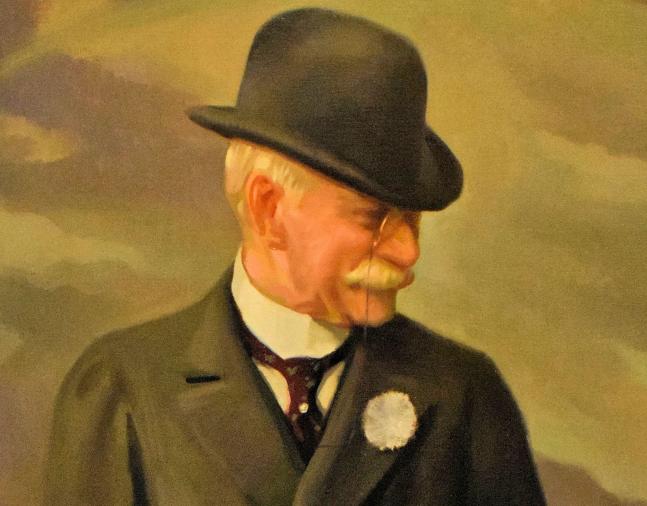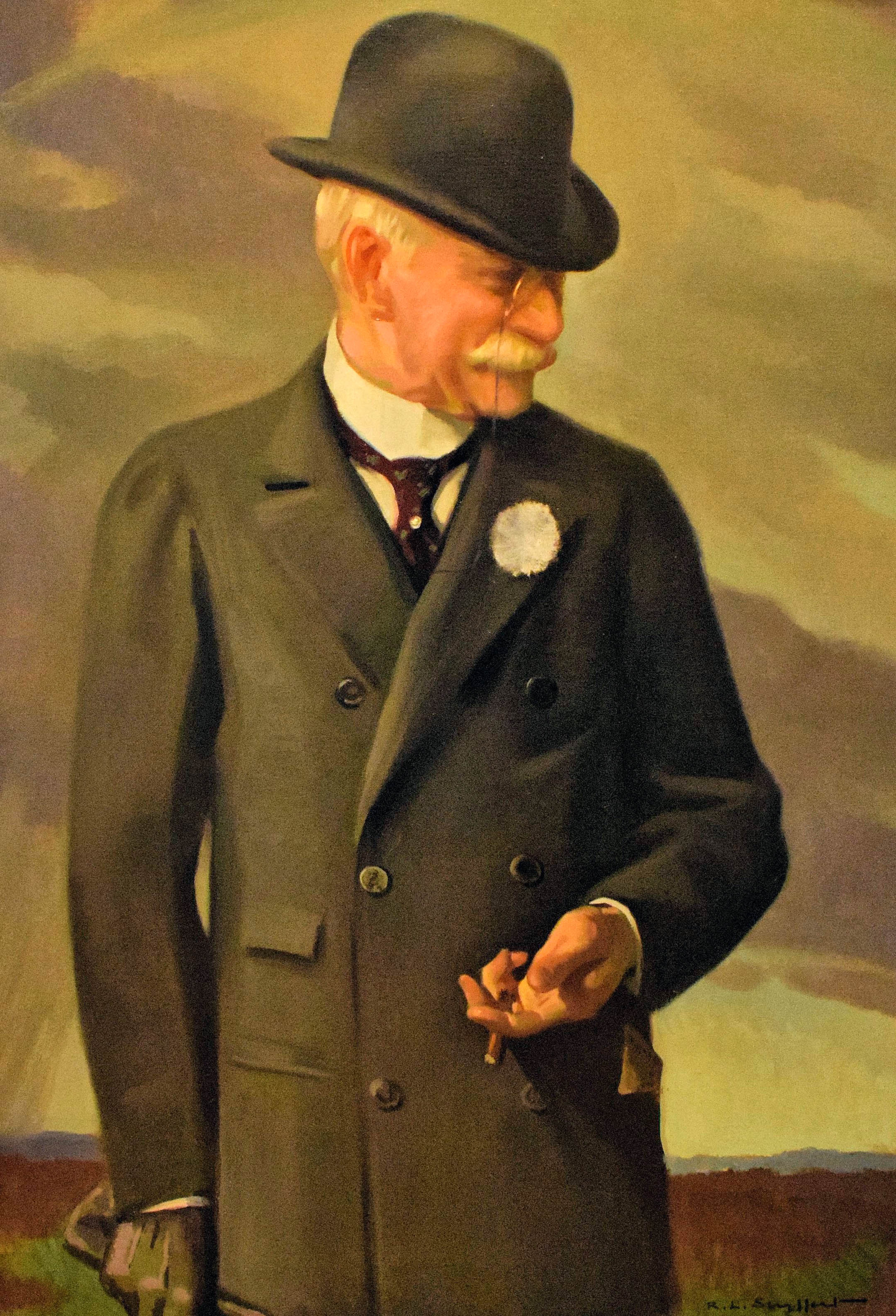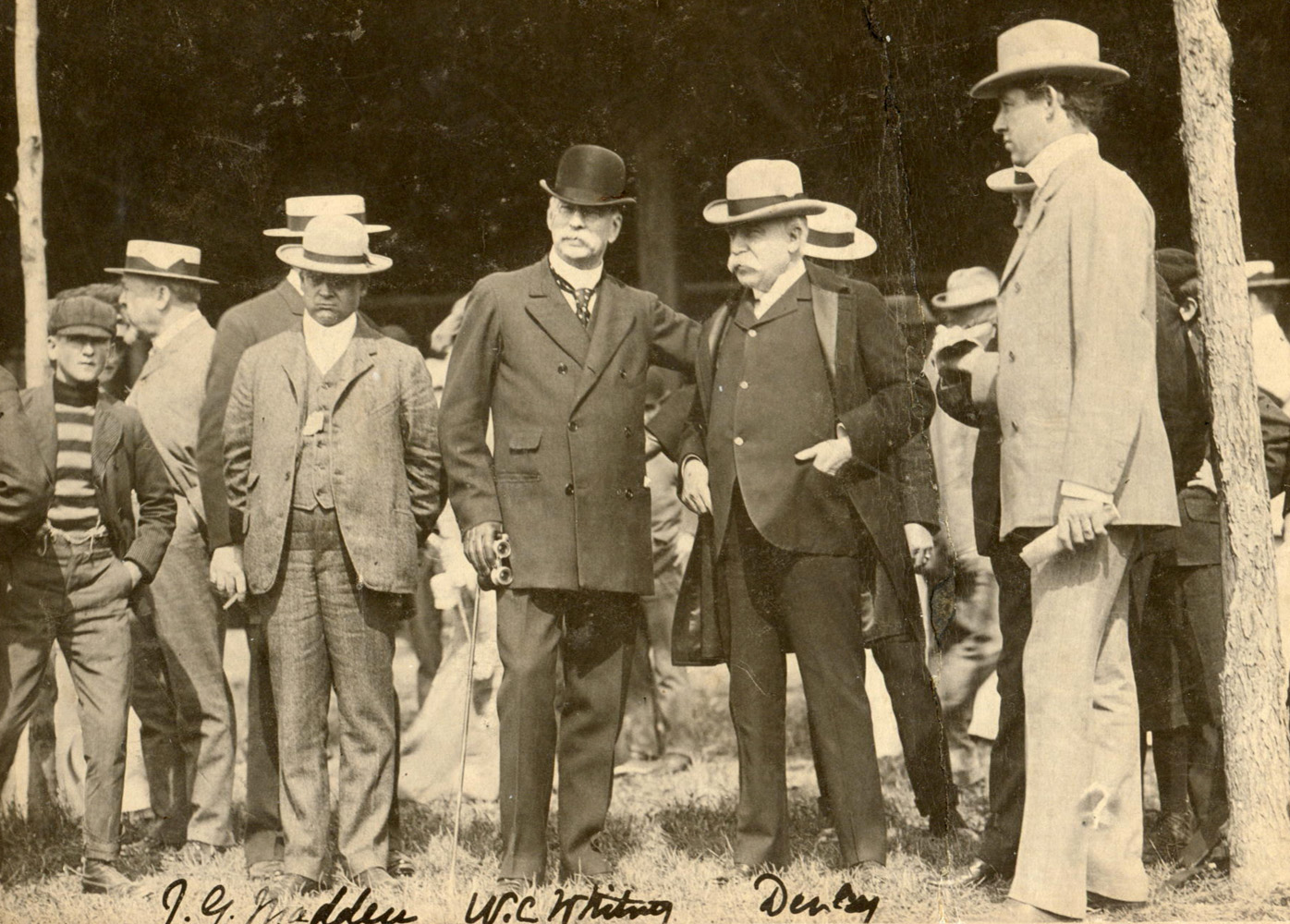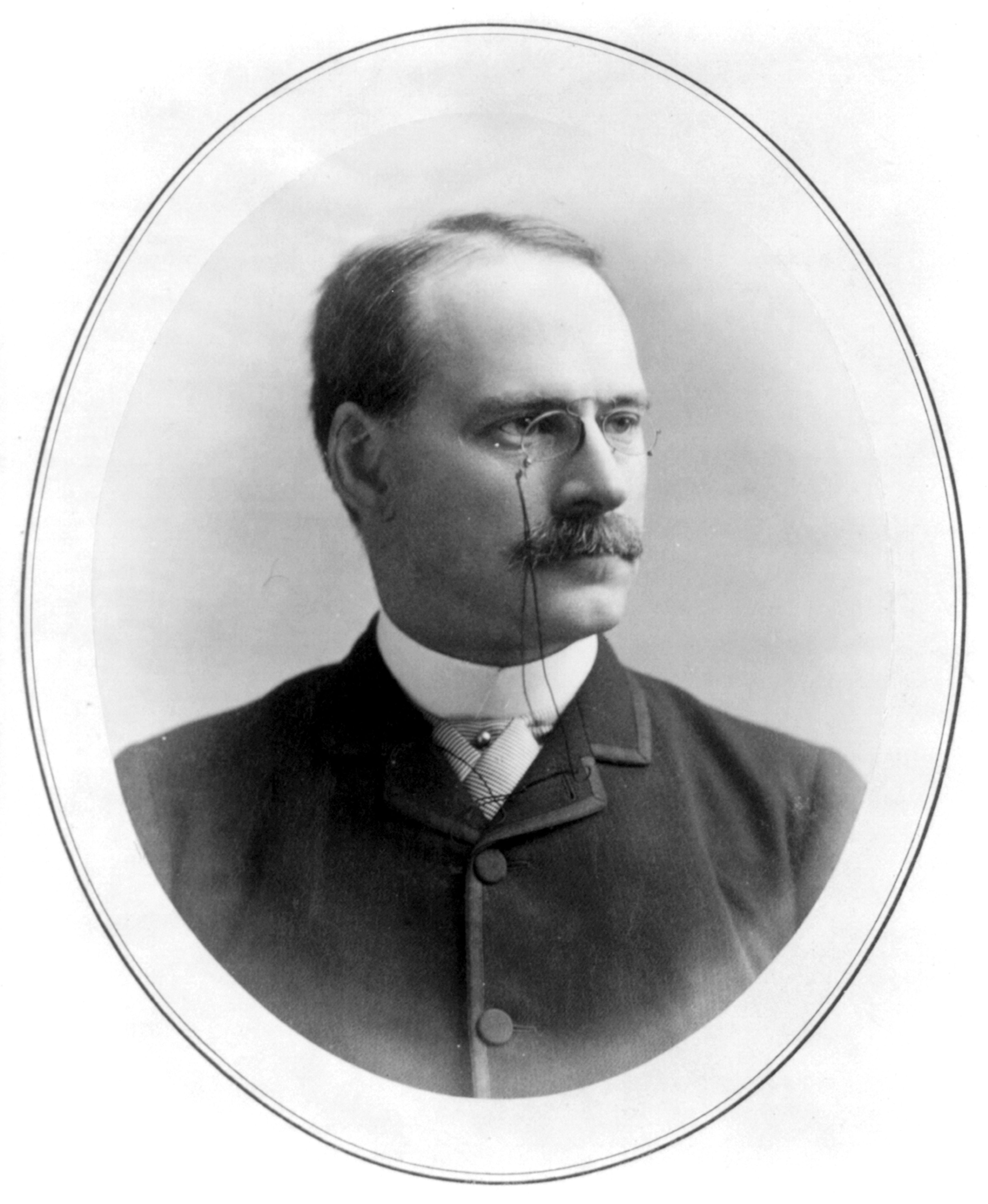William Collins Whitney
William Collins Whitney was associated with thoroughbred racing for only a few years, but his imprint on the sport was arguably as significant as any individual in the history of the American turf.

2018
July 5, 1841, Conway, Massachusetts
Feb. 2, 1904, New York City, New York
Biography
William Collins Whitney was associated with thoroughbred racing for only a few years, but his imprint on the sport was arguably as significant as any individual in the history of the American turf.
Born on July 5, 1841, in Conway, Massachusetts, Whitney was the third child of James Whitney and the former Laurinda Collins. James Whitney was a longtime member of the Massachusetts House of Representatives and his wife was a descendent of Gov. William Bradford, of Plymouth Colony. Based on family pedigree it was no surprise young W. C. Whitney developed an interest in the political arena.
After graduating from Yale University, Whitney studied at Harvard Law School before obtaining employment in a New York City law office. He soon opened his own practice in partnership with another young attorney, Henry Dimock. From 1875 to 1882, Whitney was corporation counsel of New York City, and as such brought about a codification of the laws relating to the city. He successfully contested a large part of certain claims, largely fraudulent, against the city, amounting to about $20 million. These actions considerably diminished the power of Tammany Hall’s corrupt leader, William M. “Boss” Tweed.
Whitney went on to become Secretary of the Navy during the first term of President Grover Cleveland and led the modernization of its fleet and organization. The contracts issued under the previous administration, many of which were behind the times or simply insufficient, were reviewed impartially by a committee appointed by Whitney. This led to the construction of steel steamships, modern naval guns, and the domestic manufacturing of plate armor. Whitney also streamlined the Navy’s finances and logistics and helped make the Naval War College a success.
In the mid-1890s, Whitney began to scale back his political endeavors and became interested in thoroughbred racing. He was introduced to the sport by August Belmont II and John E. Madden and quickly began assembling his stable. In 1899, Whitney purchased his first standout racehorse, Jean Bereaud, for $30,000 and won the Belmont and Withers with him in the name of his racing manager, Sydney Paget. All of Whitney’s horses ran in Paget’s name and colors during 1898 and 1899. Whitney received counsel on racing and bloodstock matters from Madden and hired Sam Hildreth to train the stable with Paget serving as the front man at the outset.
Whitney began to race in his own name in 1900. A disagreement led to Hildreth’s departure the following year and Madden took over as the stable’s primary trainer. Whitney was also enjoying success running horses in England, including a victory in the 1901 Epsom Derby with Volodyovski. It was from the English stable of George Lambton that Whitney purchased the iconic colors of Eton blue with a brown cap, which became synonymous with American racing excellence throughout the 20th century through his son, Harry Payne Whitney, and grandson, Cornelius Vanderbilt Whitney.
Along with the prominence of his stable, Whitney became a respected leader in the sport. Saratoga Race Course, which for many years featured top-class sport and efficient management under the leadership of John Morrissey, had fallen on hard times during the dark era of Gottfried Walbaum in the 1890s. Leading a syndicate of prominent owners known as the Saratoga Association for the Improvement of the Breed of Horses, Whitney purchased Saratoga Race Course in 1901 and spent a half-million dollars to upgrade the track — widening it from one mile to 1⅛ miles to eliminate the sharp turns and adding a steeplechase course in the infield — while also enhancing the grandstand and grounds. He immediately stabilized the declining stakes program and quickly returned the level of competition to its former level of prestige. Saratoga’s future, thanks in large part to Whitney, had been secured.
“Natives of Saratoga regard William C. Whitney as a patron saint,” said Frank Thorp in the Illustrated Sporting News. “He has scattered his dollars far and wide. His purchases of property have been on a magnificent scale. His improvements at the race course will foot up a half million dollars, much of which has gone into the pockets of Saratoga residents. The towns-people bless the day W. C. Whitney first set foot in their compact little village.”
Whitney was one of the original stockholders and directors of the Westchester Racing Association. When it became apparent that Morris Park was no longer a suitable racing venue, Whitney and Belmont financed and planned the construction of America’s largest track, Belmont Park.
All the while, Whitney’s stable was flourishing and his breeding operation was beginning to bear fruit. In 1901 and 1903, Whitney was the leading owner in America and it appeared he was about to embark on a racing dynasty. Whitney, however, suffered a ruptured appendix in late January of 1904. A blood infection was discovered, necessitating emergency surgery. Whitney died during the operation on the afternoon of Feb. 2. He was 62. In his limited time in the sport, Whitney bred 26 stakes winners, including the champions Artful, Tanya, Perverse and Tangle.
Whitney’s stable was raced in 1904 by Herman B. Duryea through a lease agreement. The majority of Duryea’s record $200,107 earnings that year came from Whitney’s horses. The bloodstock was dispersed at Madison Square Garden in New York City that October for a total of $463,650. Harry Payne Whitney was the sale’s principal buyer, purchasing 16 mares and two stallions (including the great Hamburg for $70,000) to begin his own remarkable foray into thoroughbred racing.
Upon Whitney’s death, President Cleveland said, “Mr. Whitney had more calm, forceful efficiency than any man I ever knew. I recall Mr. Whitney’s devotion to his friends, his extreme consideration for all with whom he came into contact, his thoughtfulness for the ease and comfort of others and his steady impulse to help those who needed it.”
Achievements
North America's leading owner in earnings — 1901, 1903
Bred 26 stakes winners, inclduing four champions
Media

![W. C. Whitney, 1873 (C. M. Bell/Library of Congress, Prints and Photographs Division, LC-DIG-bellcm-00991) Photograph of Secretariat W. C. Whitney by C. M. Bell, 1873 (Library of Congress, Prints & Photographs Division, [LC-DIG-bellcm-00991])](https://racingmuseum.org/sites/default/files/hall-of-fame/pillars/Pillar-Whitney-WC_LibraryofCongress-LC-DIG-bellcm-00991.jpg)
![Illustration by Joseph Ferdinand Keppler showing President Grover Cleveland sitting at a desk between his cabinet members, with Secretary of the Navy W. C. Whitney on the left (Library of Congress, Prints and Photographs Division LC-DIG-ppmsca-28178) Illustration by Joseph Ferdinand Keppler showing President Cleveland sitting at a desk between his cabinet members, with Secretary of the Navy W.C. Whitney on the left (Library of Congress, Prints & Photographs Division, [LC-DIG-ppmsca-28178])](https://racingmuseum.org/sites/default/files/hall-of-fame/pillars/Pillar-Whitney-WC_LibraryofCongress-LC-DIG-ppmsca-28178.jpg)

![W. C. Whitney, 1873 (C. M. Bell/Library of Congress, Prints and Photographs Division, LC-DOG-bellcm-00992) Photograph of Secretariat W. C. Whitney by C. M. Bell, 1873 (Library of Congress, Prints & Photographs Division, [LC-DIG-bellcm-00992])](https://racingmuseum.org/sites/default/files/hall-of-fame/pillars/Pillar-Whitney-WC_LibraryofCongress-LC-DIG-bellcm-00992.jpg)
![W. C. Whitney, 1873 (C. M. Bell/Library of Congress, Prints and Photographs Division, LC-DIG-bellcm-00990) Photograph of Secretariat W. C. Whitney by C. M. Bell, 1873 (Library of Congress, Prints & Photographs Division, [LC-DIG-bellcm-00990])](https://racingmuseum.org/sites/default/files/hall-of-fame/pillars/Pillar-Whitney-WC_LibraryofCongress-LC-DIG-bellcm-00990.jpg)





